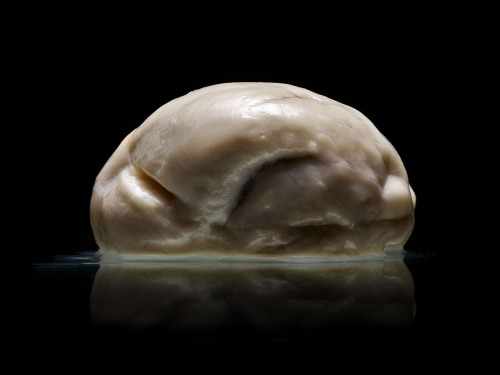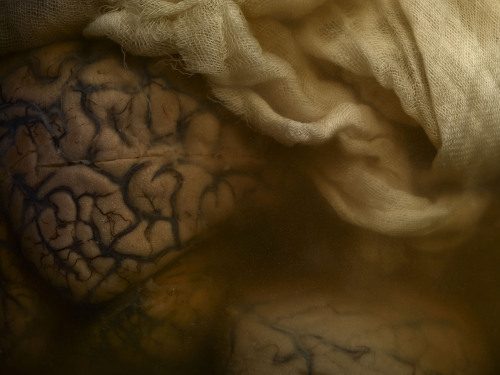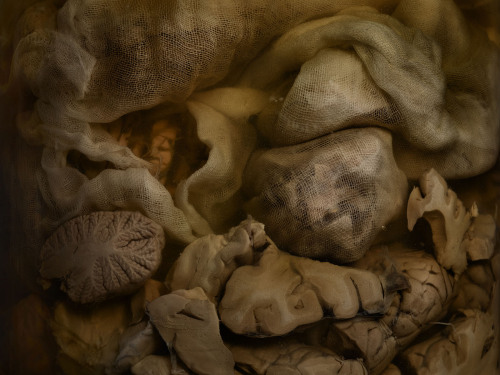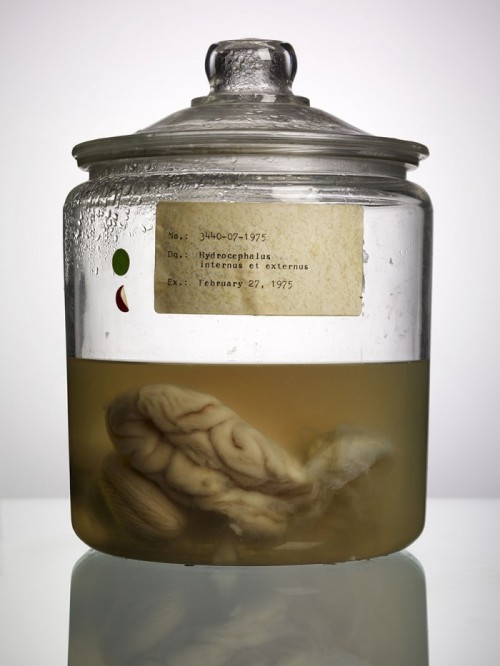neurosciencestuff:Today the White House announced its goal to fund Brain Research, in hopes of furth
neurosciencestuff:Today the White House announced its goal to fund Brain Research, in hopes of furthering understanding of brain disorders and degenerative diseases such as Alzheimer’s.Two years ago Scientific American magazine sent me to the University of Texas at Austin to borrow a human brain. They needed me to photograph a normal, adult, non-dissected brain that the university had obtained by trading a syphilitic lung with another institution. The specimen was waiting for me, but before I left they asked if I’d like to see their collection.I walked into a storage closet filled with approximately one-hundred human brains, none of them normal, taken from patients at the Texas State Mental Hospital. The brains sat in large jars of fluid, each labeled with a date of death or autopsy, a brief description in Latin, and a case number. These case numbers corresponded to micro film held by the State Hospital detailing medical histories. But somehow, regardless of how amazing and fascinating this collection was, it had been largely untouched, and unstudied for nearly three decades.Driving back to my studio with a brain snugly belted into the passenger seat, I quickly became obsessed with the idea of photographing the collection, preserving the already decaying brains, and corresponding the images to their medical histories. I met with my friend Alex Hannaford, a features journalist, to help me find the collection’s history dating back to the 1950s.Over the past year while working this idea into a book, we’ve learned how heavily storied the collection is. That it was originally intended to be displayed and studied, but without funding it instead stagnated. And that the microfilm histories of each brain had been destroyed years ago.My original vision of a photo book accompanied by medical data and a comprehensive essay turned into a story of loss and neglect. But Alex continued to pursue some scientific hope for the collection. After discussions with various neuroscientists we learned that through MRI technology and special techniques in DNA scanning there is still hope. And with the new possibilities of federal brain research funding, this collection’s secrets may yet be unlocked.As we begin the hunt for someone to publish my 230 images accompanied by Alex’s 14,000 word essay, the University has found new interest in the collection. They currently are planning to make MRI scans of the brains.Malformed – A Collection of Human Brains from the Texas State Mental Hospital by Adam Voorhes -- source link
Tumblr Blog : neurosciencestuff.tumblr.com





